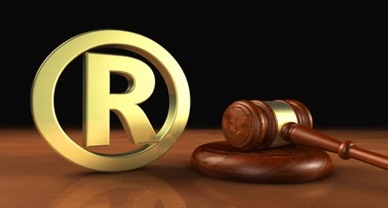Protecting Digital Identities: Trademarks, Domain Names, and the Menace of Cyber-Squatting
Introduction
In the current era, especially the period post COVID-19, there has been a tremendous growth in the internet traffic and this advancement has helped merchants to drastically expand their businesses online through utilisation of domain names. It is defined to be a unique address that is used by Internet users for the purpose of accessing a website via a web browser. They correspond with IP addresses and are easier to remember and type. They generally share a standard structure, i.e., beginning with the third level domain which is ‘www’, then comes the second-level domain, which is used as a identification mark for the particular entity to which that website belongs.Finally, comes the top-level domain which indicates type of organization like “.gov” is used for indicating government organization whereas “.edu” is used for indicating educational institutions.[1]
In simpler terms, a domain name just like a trademark functions as a distinctive marker for a business and safeguards and promotes the identity of the brand in the digital market.The Internet Corporation for Assigned Names and Numbers (ICANN) oversees the Internet Assigned Numbers Authority (IANA) functions, which are pivotal technical services crucial for the ongoing functionality of the Internet’s fundamental address book, the Domain Name System (DNS). This has a potential to give rise to significant issues, because any individual, irrespective of their association with a recognized entity, may register a name.Thiscould further impede the right of the authentic and rightful owner from utilizing the said name.[2]
Registration of Domain Names under Trade Marks Act, 1999
The domain names can be granted protection equal to that of Trademarks, provided they fulfil all specified criteria delineated in Section 2(ZB) of the Trade Marks Act, 1999, which lists down certain essentials such as:
- Capable for graphical representation
- Capable for distinguishing goods or service
- May include the shape of goods, their packaging and combination of colours
Thus, a domain name needs to be qualified as a trademark first in-order to secure protection under the trademarks laws. However, a caveat to this is that the use of a similar mark can still be permitted on different products or services, though it may not be eligible for registration as a domain name.[3] The problem of protection of Domain name was discussed by the Supreme Court in the case Satyam Infoway Ltd. v. Sifynet Solutions Pvt. Ltd.[4] The court held that though the domain names were initially used for locating computers on the Internet, but now it serves as a distinct business identifier for different companies engaged in commercial activities. Therefore, with the increasing presence of commercial enterprises on web, it becomes apparent that domain name may be subject to norms applicable to other intellectual property rights such as trademarks. Similarly, again in the case of Rajat Agarwal v. Spartan Online[5], the Calcutta High Court had focused on the need for the domain names to be distinguishable from others for the purpose of establishing separate brand identity.
Contentious Issue of Cyber-Squatting:
Cyber-squatting refers to the practice, when an individual , who is not the rightful owner of the trademark registers a domain name that is similar or confusingly identical to that trademark and tries to capitalize on it in an unfair manner by either by demanding payment for the return of that domain name to the legitimate owner of the trademark or utilising the domain name to redirect business from the owner of the trademark to himself like in cases where, an internet user misspells the domain name or makes a typographical error when entering the company’s name in the address bar, the browser leads the user to a completely different website.[6]In India, however, there isn’t any particular legislation that deals with the unethical practice of cybersquatting, however, there are certain judicial precedents that have been laid regarding this.[7]
[Image Sources: Shutterstock]
The first case pertaining to cybersquatting in India was Yahoo! Inc. v. Akash Arora[8], the plaintiff was the proprietor of the well-known trademark “Yahoo” and corresponding domain name, “Yahoo.com”. The defendants had registered a deceptively similar domain name “YahooIndia.com”. The court had in this case applied the principles of passing off and prevented the defendant from employing usage of its domain name.
In another famous case of Acqua Minerals Ltd. v. Pramod Borse[9], the plaintiff was the registered owner of trademark “Bisleri” and the defendant had registered an identical/deceptively similar domain name “Bislari.com”. After examining the facts, the court held that the owner of trademark had the exclusive right to register the trademark as a domain name under the trademark law. It also held that when possessor of a trademark has prior and exclusive usage, they not only possess superior title but also absolute ownership. In cases, where the mark is associated with some commercial activities, thereby signifying trade or commerce under that name, the owner gains a domain right over it, and it has the same protection as any trade name. Trespassing the same constitutes an action for infringement, if the mark is registered or it may become subject to action for passing-off if not registered.
Conclusion and Suggestions:
In the contemporary digital landscape, domain names are being recognized as crucial aspects for businesses as they play a vital role in fostering consumer loyalty and establishing brand value. Given the expanding realm, the prevalence of specific targeting of the identities of well-known businesses has increased. Thus, it becomes imperative to establish robust mechanism for combatting this menace as this would not only help in safeguarding the legitimate interests of the trademark holder but also of the general public by preventing confusion amongst them.[10] It also becomes necessary to incorporate a dedicated chapter or sections in the Trademarks Act 1999 that deals with cybersquatting and imposition of substantial damages as a penalty. This may also involve making suitable changes in Section 2(m) to expressly include “domain name” in the definition of mark.
Recently, the Delhi High Court in the case of Snapdeal Private Limited v Godaddycom LLC[11]observed the Domain Name Registrars (DNRs) should establish a mechanism by which the trademark owners can raise objections to the registration that is granted to a domain name and can seek the cancellation or transfer of the same. It was further held that this mechanism needs to be independent and impartial and if the transfer/cancellation/suspension as alleged is not agreed, then the IP owner can still pursue other legal remedies as provided by law. This is a welcome change as it would help in faster and more efficient resolution of the disputes that arise with regard to trademarks and domain names.
Author: Dhairya Kumar, in case of any queries please contact/write back to us at support@ipandlegalfilings.com or IP & Legal Filing
[1]‘Domain Name’ (Legal Information Institute) <https://www.law.cornell.edu/wex/domain_name#:~:text=A%20domain%20name%20is%20the,generally%20share%20the%20same%20structure> accessed 19 December 2023
[2]Determining the “Domain” of Trademark Laws – Application in the Interception of Cyber Squatters, (2014-15) 1.1 IJLPP 63
[3] Protection of Domain Name under Existing Legal Framework, 3.1 JCLJ (2022) 315
[4]Satyam Infoway Ltd v Sifynet Solutions (P) LtdAIR 2004 SC 3540
[5]Rajat Agarwal v Spartan Online AIR 2017 (NOC 846) 287
[6]‘Cybersquatting’ (Legal Information Institute) <https://www.law.cornell.edu/wex/cybersquatting> accessed 19 December 2023
[7] Trademark Infringement Through CybersquattingLaw and Policy A Study of UDRP and Indian System, CNLU LJ (6) [2016-17] 33
[8]Yahoo! Inc v Akash Arora [1999] IIAD Delhi 229
[9]Acqua Minerals Ltd v Pramod Borse2001 SCC OnLine Del 444
[10]Domain Name Disputes and the Rising Threat of Cybersquatters, 6.1 IJLS (2020) 27
[11] Snapdeal Private Limited v Godaddycom LLC and Ors 2022 LiveLaw (Del) 653



